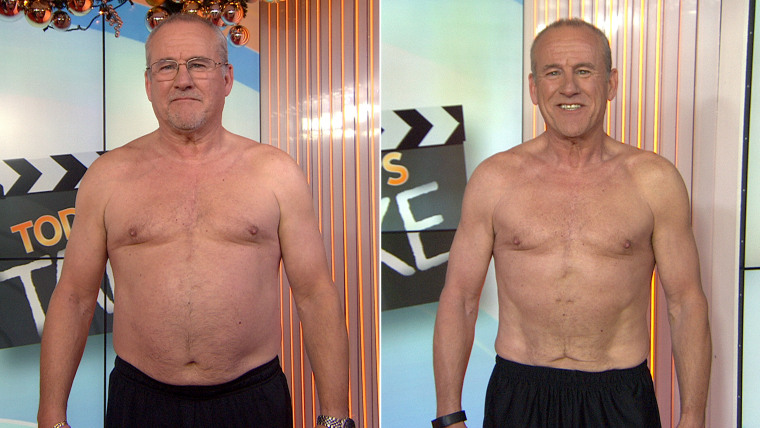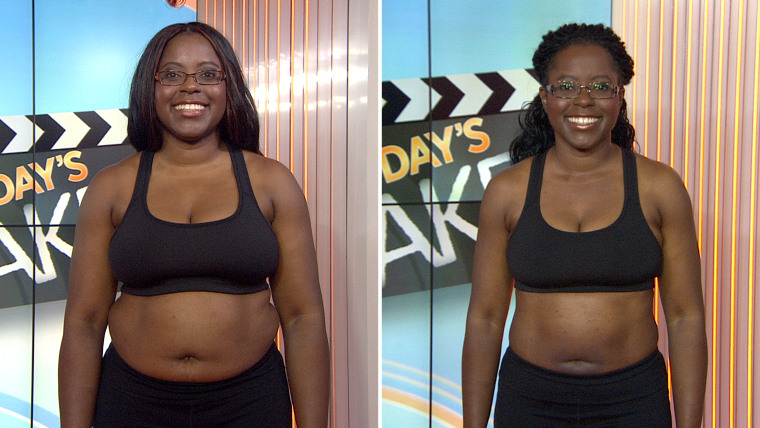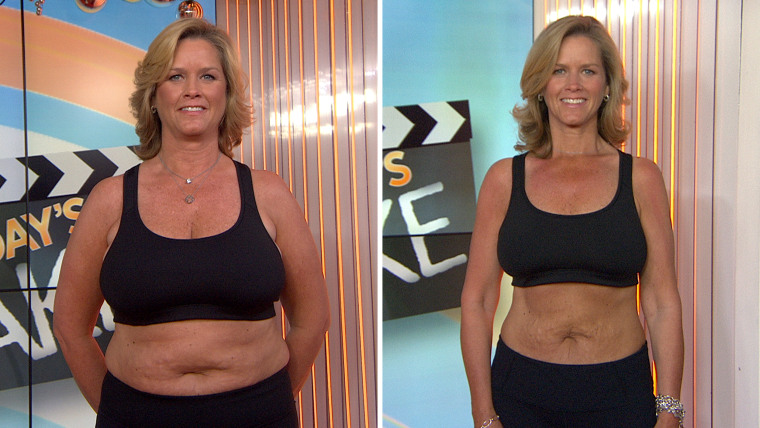From January to June, TODAY watched as the pounds seemed to melt away from three of our viewers as part of the "6 Months to a 6-Pack Challenge" with nutritionist Joy Bauer and fitness trainer Jeff Halevy.
We set out on a journey for six-pack abs in six months, and none of our participants ended up with a six-pack. What went wrong — or better stated what went right?
Six-pack abs may be the most coveted fitness status symbol, but it hardly tells the whole story ... or any part of the story, really. Six-pack abs, at their simplest, indicate not the possession of health, but a lack of certain things, namely abdominal fat. One can argue that the absence of abdominal fat is in fact a barometer of health, but I would simply divert your attention to the "ripped" smokers I know and the malnourished worldwide, neither of whom we can agree fall into the "healthy" category.
While a six-pack may have been the "carrot on a string" for our participants, they have all gotten to enjoy a far better carrot: health. Yes, they have lost weight, but they have done so in a healthy, sustainable fashion over six months, and in a way that both improved their lifestyles, attitudes towards exercise, and physical well-being.
Slimming and savory! Ab-friendly shredded salsa chicken, bean soup and strawberry shortcake
Ralph Oswald: "My wife and I challenge each other to walk more."

Ralph came out of his corner swinging — quite literally. A long-time karate practitioner, exercise wasn't foreign to Ralph, so getting him on board with my workouts wasn't a challenge. The greater challenge was a shift in lifestyle; simply moving more.
And what Ralph did was NEAT. I'm being cute here, because aside from Ralph's walking challenges with his wife being neat, they are also what is referred to in clinical circles as Non-Exercise Activity Thermogenesis (NEAT).
This incremental daily activity is more important than researchers previously believed when it comes not only to health, but fat loss as well. By simply moving more, and moving more frequently, the body's metabolism is more active — meaning more calories are being burned, without necessarily getting burned out at the gym. What's really neat about NEAT is you can can start right now: Get up from your desk and take a five minute walk! Do that every hour or so. And in between try to stand every so often...that counts too!
Tamara Halsell: "It was too hard, but I did it anyway."

Tamara charmed us all when she told us she wanted to be a "brick house," but when she started with her workouts she hit a brick wall.
But she didn't quit. We carefully tailored Tamara's workouts so that when she first started, and nearly every second was agony, the workouts were short, and very soon left her feeling underworked.
We systematically increased the total amount of work that Tamara was doing in her workouts (e.g. sets, reps, and number of exercises), and the frequency of her workout schedule. Tamara still may not say workouts are "fun," but she gets them done!
The takeaway from this is to not start a new workout routine too fast and too furious. High-intensity programs that challenge you to do complex moves as quickly as possible are the flavor of the day, but they can quickly lead to injury and burnout — and generally can be a psychological deterrent.
I would suggest if you are starting a new workout regimen, begin by doing 50 percent of what you believe you can do, in terms of frequency, work, and duration. If you plan to work out five days per week, start with two; if you plan to work out for an hour, start with thirty minutes; and so on.
Less is more, especially in the beginning.
Kelli Dinola: "My lower back didn't hold me back."

Kelly was hesitant to start exercising at all due to a "bad back." But if that isn't a good reason to start exercising, I don't know what is!
Very often pain in the back, shoulders, knees and other joints comes from carrying excess bodyweight and from muscles responsible for keeping these areas stable being deconditioned (a state, wherein a muscle is predisposed to injury due to lack of use). So, while it may seem counterintuitive, you want to, in fact, work the very areas that may feel achy and tight.
You would, of course, first want to screen for any serious underlying pathology (e.g. disc herniation in the back) with a physician. Assuming there is none, it is imperative to strengthen these deconditioned areas. You do not need to lift 500 pounds off of the floor either; many bodyweight exercises are sufficient to strengthen these areas and bring them up to speed.
Pain may indicate a problem, but discomfort does not mean discontinue.
Don't miss: Baggy clothes banished! See the results of Joy's Bauer's abs-blasting challenge